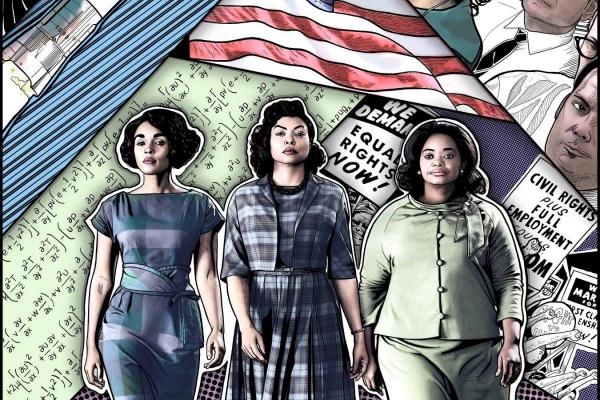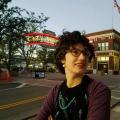Katherine Johnson, Mary Jackson, and Dorothy Vaughn — three African-American women who worked at NASA as “computers,” or figure-checkers, and came to play invaluable roles in the space race — have incredible stories to tell.
Their stories also deserve a better telling than they get in the new film Hidden Figures, an unchallenging, by-the-numbers movie. It’s mostly fine but largely forgettable, with a script that suffers from flat characters and which treats its story less like the powerful drama it is and more like a straight line evenly peppered with plot points.
Johnson (Taraji P. Henson) is a widowed mother and brilliant mathematician plucked from the computing pool to assist with the calculations for John Glenn’s Friendship 7 mission. Jackson (Janelle Monae) seeks to become an engineer, and has to stand up to her town’s legal system in order to take required extension courses, taught only at an all-white high school. Vaughn (Octavia Spencer) runs the black computer pool, and endeavors to master IBM code after NASA introduces a machine that threatens to put her and her fellow computers out of work.
There are plenty of interesting moments of lesser-known history on display throughout the film, from introducing the all-women computing pool, and its racially segregated offices, to the frequent gender and race-based obstacles placed in front of Johnson, Jackson, and Vaughn. Pleasant, too, is the supportive, family-positive atmosphere of the movie — each woman has strong familial relationships, and together they form a community in which they lift each other up.
What’s lacking is complexity. Each of the characters in Hidden Figures, from the women to their supervisors, are given only one trait that defines their character. Johnson is quietly strong. Jackson is sassy. Vaughn is determined. Johnson’s supervisor, Al Harrison (Kevin Costner), is grumpy. Vaughn’s boss (Kirsten Dunst) is snobby. We know little about the characters other than these basic definitions. While that’s enough to create a skeleton of a story, it’s not enough to let audiences identify with the characters, and sometimes creates emotional moments that seem to have come from nowhere. The film’s characters may be based on real people, but they often seem like cardboard cutouts.
The movie also places most of its focus on Johnson’s story, and while hers is certainly the most high-profile of the three, it’s definitely not the most interesting. Most of the conflict Johnson faces comes in moments of irritating passive aggression on behalf of her co-workers, while other plot lines, like Jackson’s, involve a protagonist actively taking on an unfair system and winning. Between the relative flatness of the film’s other stories, and Janelle Monae’s standout performance in the role, the biggest disappointment of Hidden Figures is that Jackson’s particular story doesn’t get more screen time.
This isn’t to say that Hidden Figures is a bad movie. It’s a perfectly okay film in the feel-good crowd pleaser mold. But as important as the stories of these three often overlooked women are, it feels as if not enough time, effort, or vision were really put into the film to make it stand out. It’s not a movie that will offend anyone’s sensibilities. But it’s unlikely that audiences will be able to recall anything significant about it a year from now. These extraordinary women deserve better.
Got something to say about what you're reading? We value your feedback!

